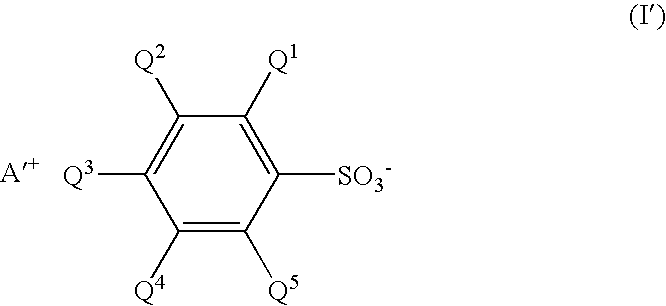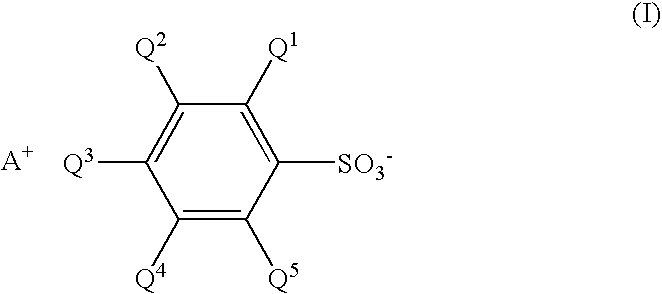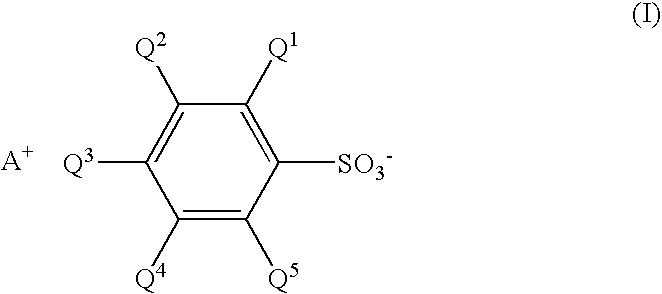Amplification type positive resist composition
a positive resist and composition technology, applied in the field of chemical amplification type resist composition, can solve problems such as uniform line width deterioration
- Summary
- Abstract
- Description
- Claims
- Application Information
AI Technical Summary
Benefits of technology
Problems solved by technology
Method used
Image
Examples
synthesis example 1 (
Resin Synthesis Example 1 (Synthesis of Resin A1)
[0207] 2-Ethyl-2-adamantyl methacrylate, 3-hydroxy-1-adamantyl methacrylate and .alpha.-methacryloyloxy-.gamma.-butyrolactone were charged at a molar ratio of 5:2.5:2.5 (20.0 parts:9.5 parts:7.3 parts), and methyl isobutyl ketone in twice weight based on all monomers was added, to prepare solution. To the solution was added azobisisobutyronitrile as an initiator in a ratio of 2 mol % based on all monomer molar amount, and the mixture was heated at 80.degree. C. for about 8 hours. Then, the reaction solution was poured into large amount of heptane to cause precipitation, and this operation was repeated three times for purification. As a result, copolymer having a weight-average molecular weight of about 9,200 was obtained. This is called resin A1.
synthesis example 2 (
Resin Synthesis Example 2 (Synthesis of Resin A2)
[0208] 2-Ethyl-2-adamantyl methacrylate, 5 -methacryloyloxy-2,6-norbornene-lactone and .alpha.-methacryloyloxy-.gamma.-butyrolactone were charged at a molar ratio of 2:1:1 (11.1 g:5.0 g:3.8 g), and 50 g of 1,4-dioxane was added, to prepare solution. To the solution was added 0.30 g of azobisisobutyronitrile as an initiator, and the mixture was heated to 85.degree. C. and the mixture was stirred for 5 hours maintaining the temperature. Then, operation of pouring into large amount of n-heptane to cause crystallization was repeated three times for purification to obtain copolymer having a molecular weight of 9100 and a dispersion of 1.72. This is called resin A2.
[0209] Resist compositions were prepared using raw materials shown below in addition to the resins obtained in the above-mentioned resin synthesis examples, and evaluated.
[0210]
[0211] B1: 4-methylphenyldiphenylsulfonium
[0212] 2,4,6-triisopropyl-3-nitrobenzenesulfonate
[0213] B2: ...
PUM
| Property | Measurement | Unit |
|---|---|---|
| wavelength | aaaaa | aaaaa |
| wavelength | aaaaa | aaaaa |
| wavelength | aaaaa | aaaaa |
Abstract
Description
Claims
Application Information
 Login to View More
Login to View More - R&D
- Intellectual Property
- Life Sciences
- Materials
- Tech Scout
- Unparalleled Data Quality
- Higher Quality Content
- 60% Fewer Hallucinations
Browse by: Latest US Patents, China's latest patents, Technical Efficacy Thesaurus, Application Domain, Technology Topic, Popular Technical Reports.
© 2025 PatSnap. All rights reserved.Legal|Privacy policy|Modern Slavery Act Transparency Statement|Sitemap|About US| Contact US: help@patsnap.com



